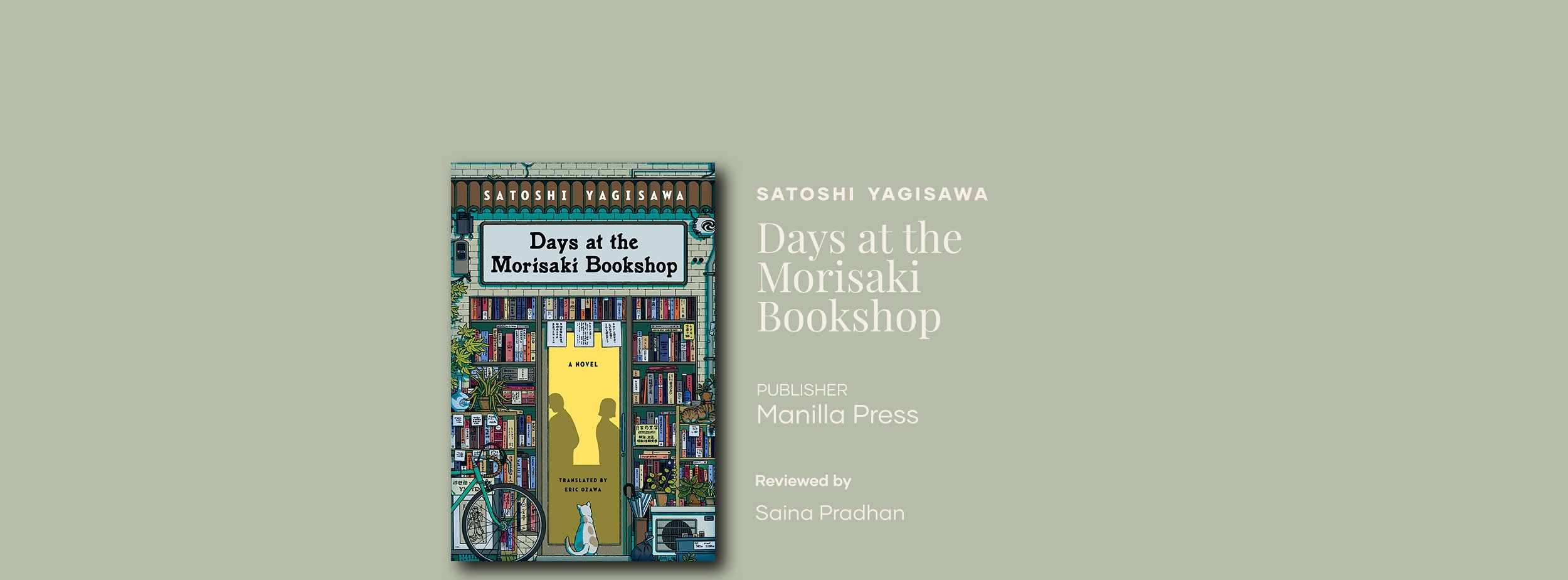
‘A heartwarming book about how books can change your life’
When reading a book that is about books, there is an incomprehensible sense of comfort. It prompts you to reflect on your own journey as a reader and a book lover by taking you down the alleyways of nostalgia. You have a strong sense of familiarity and longing. Days at the Morisaki Bookshop is a treat for bookworms and reinforces the reader's belief in the transformative power of literature.
The first novel by Satoshi Yagisawa, which was released in 2010 and won the Chiyoda Literature Prize, was also later made into a movie. It's a sweet, slice-of-life story set in Jimbocho, the Tokyo neighbourhood renowned for its variety of used book stores. The story follows Takako who quits her job and grudgingly moves into a small room above her uncle's bookshop when her romantic relationship comes to a catastrophic end, leaving her feeling lost and depressed. Takako's arc is described in Yagisawa's book as she discovers reading and other minor joys provided by the neighbourhood, including eccentric locals and quaint coffee shops. After a few years, the plot jumps to Takako's uncle Satoru, who is reunited with his long-lost wife Momoko following her strange disappearance. The whimsical vibe and the emphasis on the transforming effect of reading, despite the weirdly fragmented and occasionally faulty translation, is wildly enjoyable and quick to read.
Without a doubt, reading this book will warm your heart. It seems like a literary hug because it envelops you in warmth like an old, cosy cardigan. This book primarily celebrates the transformational power of reading and the subtle but significant ways in which books may influence our lives. It's a good-hearted, endearing, and consoling tale that will certainly stay in your heart. The characters' journeys through life's ups and downs are entwined with the books they read and suggest, creating an exquisite tapestry of self-discovery. The text is straightforward but effective, like a calming song that stays in your head long after you've finished the book.
This is a really nice, crisp tale about finding oneself again, falling in love with literature, and the various ways we can relate to others when we take the time to get to know them a little better. Many of Takako's assumptions about her new employment are disproved, and she also gains new perspectives from regulars at the bookshop and people she meets at a nearby coffee shop. The plot of this brief book is thin, and the focus ultimately lies in the bookshop's vibes and ambiance, which are expertly captured. This is the aspect of the book that is the most magnificent because it made the sights and scents of the neighbourhood come to life on the page. Takako is an engaging main character who embarks on her own trip throughout the book's two halves and comes to the realisation that there is frequently more to life than what first appears. Although the tale could have used a little more depth,it was still a very delightful and comfortable read that will speak to every book lover’s soul.
By setting the fictional Morisaki Bookshop in Tokyo's actual "Jimbocho" book village, Yagisawa's debut book stirs up historical flashbacks. Jimbo Nagaharu, a samurai who lived there in the 17th century, inspired the name. Following the Meiji restoration in 1868, numerous universities started to sprout up in the Jimbocho area. The number of stores selling academic texts increased as a result. Later, as "one yen books" were produced in large quantities with the goal of making literature accessible to the Japanese population, a number of used book businesses sprang up nearby.
The book is an upbeat read with inspiring life lessons sprinkled throughout. It is important to remember —
“No matter where you go, or how many books you read, you still know nothing, you haven’t seen anything…like that Santoka Taneda poem, the one that goes, ‘On and on, in and in, and still the blue-green mountains.”
Maybe the introduction of e-books and the Kindle has given us holding a book, breathing its aroma, and feeling the worn pages that so many others before us have touched a newfound excitement. All the sentimental elements of a book — the lessons about life, the self-help ideas tucked away in cherished tales, the wordplay, the translations, the award-winning material, the timeless masterpieces, and the odd intoxicating power of language itself.
According to the Translator's Note:
‘In the course of the story, he (the author) catalogues the many pleasures of reading: the joy of discovering a new author; the hedonism of staying up too late to finish a book, the surreptitious thrill of getting to know someone by reading their favourite novel; and the freedom of walking into a bookstore and scanning the titles, waiting for something to catch your eye.’
